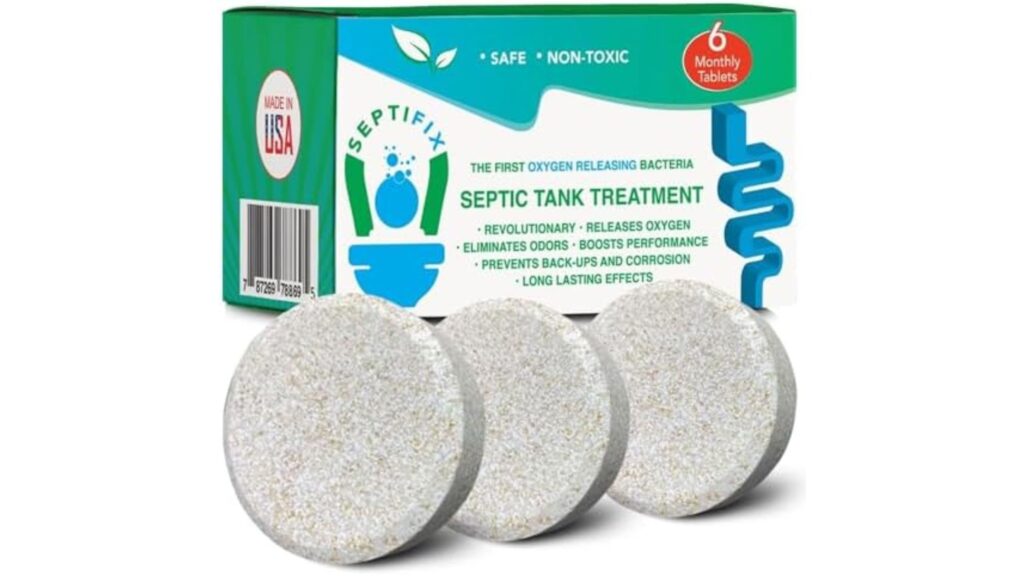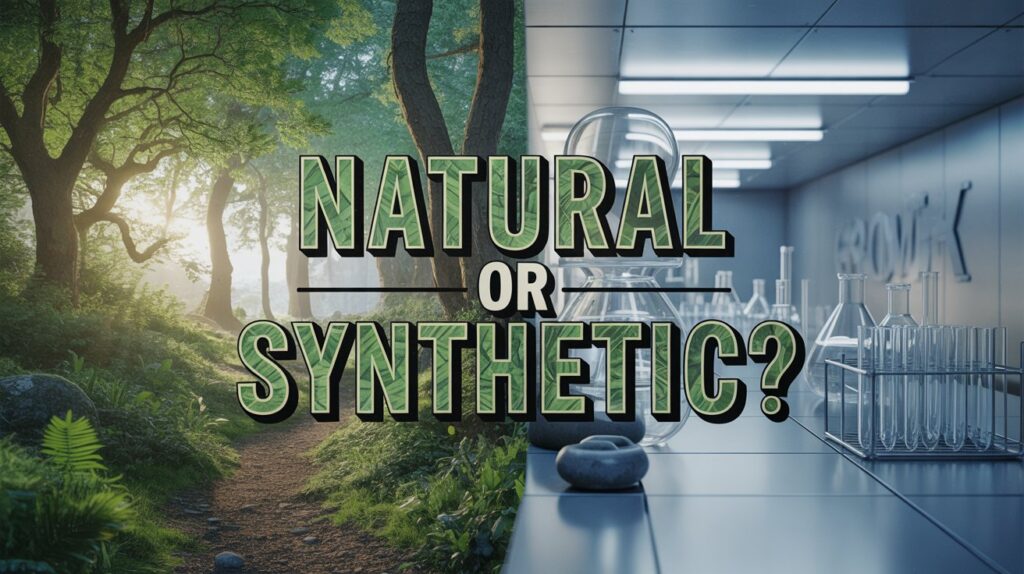Do you ever wonder if the products you use in your daily life are natural or synthetic? The choices you make regarding what to use can have a significant impact on your environment and health. Today, we’re going to explore one such product: Septifix. We’ll look at its features and try to understand whether it is a natural solution or a synthetic aid.
This is an intriguing question, especially if you’re accustomed to living a sustainable lifestyle or conscious about the products entering your ecosystem.


Understanding Septifix
Before we determine the nature of Septifix, let’s first delve into what exactly it is. Septifix is a type of septic tank treatment that claims to address common septic tank issues. These issues can range from clogs and foul odors to more severe blockages.
What is a Septic Tank Treatment?
A septic tank treatment usually comes in the form of tablets, powders, or liquid solutions designed to enhance the functioning of your septic system. Generally, these treatments aim to break down solids, manage waste more effectively, and prevent or solve blockages. They are especially useful for homeowners who are looking to maintain a healthy waste management system.
Why is Septifix Popular?
Septifix has garnered attention due to its claims of reducing odors and unclogging septic tanks more efficiently than some traditional methods. It suggests that it can provide an enhanced bacterial septic treatment that can break down organic waste more effectively.
But, all these claims lead us back to the main question: Is Septifix naturally derived, or is it a synthetic aid?
Composition of Septifix
To adequately assess whether Septifix is natural or synthetic, examining its composition is crucial. The product is said to contain a range of components designed to improve septic tank conditions.
Natural Components
Natural septic treatments typically consist of bacteria and enzymes, which help break down organic materials in the tank. They mimic the naturally occurring processes in the ecosystem. Some common ingredients include:
- Bacteria Strains: Essential for decomposing solid waste.
- Enzymes: Assist bacteria by breaking down fats, oils, and other waste products.
Synthetic Components
On the other hand, synthetic additives may include chemical compounds designed to imitate or enhance natural processes. These could be:
- Chemical Surfactants: These help to dislodge solids stuck within the system.
- Artificial Fragrances: Used to mask odors but not solve underlying problems.
The Science of Septifix
The makers of Septifix claim to use a proprietary formula that contains oxygen-releasing compounds and enzymes. This aspect involves decomposing waste more effectively compared to other treatments. While this might sound synthetic, let’s take a closer look.

How Septifix Works
The efficiency of a septic tank treatment product lies in its working mechanism. Septifix claims its unique working system makes it stand out.
Oxygen Release
One key feature here is the oxygen release mechanism. Septifix tablets have been designed to release oxygen once they dissolve in water.
How does it work?
- Oxygen Dissolution: As soon as the tablet hits the water, it starts dissolving, releasing a significant amount of oxygen into the septic tank.
- Oxygen-Boosted Bacteria: The oxygen provides an ideal environment for aerobic bacteria to thrive, which are more effective at breaking down waste than anaerobic bacteria.
Enzymatic Action
The enzymes present also play a crucial role in waste decomposition. Enzymes like protease, lipase, and amylase aid in breaking down proteins, fats, and carbohydrates respectively.
- Accelerated Breakdown: By speeding up the breakdown of substances, enzymes help to ensure that everything is processed quicker, resulting in a tank with lower sludge formation.
Reduction in Off-Putting Odors
Arguably one of Septifix’s selling points is its claim of significantly reducing bad odors. This again is thanks to the increased oxygen level allowing better bacterial processing of waste.
Evaluating Whether Septifix is Natural or Synthetic
Having understood its working, let us dig deeper into the natural vs. synthetic debate.
Natural Characteristics
Based on the components and their functioning, several aspects make Septifix appear almost natural:
- Bacteria and Enzymes: As mentioned, these are natural components found in any effective septic system. Septifix employs these in higher concentrations to hasten waste degradation.
- Absence of Harsh Chemicals: Unlike completely synthetic options, which may pack harmful chemicals, Septifix prides itself on being free from such substances.
Possible Synthetic Elements
While the product does boast predominantly natural ingredients, synthetic attributes cannot be entirely ruled out, such as:
- Oxygen-Releasing Compounds: The question remains, what makes these oxygen-releasing compounds if not purely natural?
- Enhanced Performance: It may be artificially refined or improved to perform better than if it were purely natural.
Pros and Cons of Using Septifix
Knowing whether Septifix is natural or synthetic may guide you, but it’s equally essential to weigh the pros and cons of using it for your septic system.
Pros
- Efficient Odor Control: Helps keep unpleasant odors at bay, promoting a fresher environment.
- Environmentally Friendly Options: Utilizes biodegradable components, typically reducing environmental harm.
- Prolongs System Life: Regular usage can increase the longevity of your septic system by maintaining optimal conditions.
Cons
- Varied Effectiveness: Results can vary based on your existing tank conditions, leading to inconsistent outcomes.
- Potential Cost: Might be more expensive than straightforward chemical treatments.
- Synthetic Uncertainty: The composition might not be completely natural due to potential synthetic oxygen-releasing additives.

The Environmental Impact of Septifix
Septic treatments can have significant environmental impacts. It’s vital to understand how Septifix aligns with eco-friendly practices.
Reduced Chemical Run-Off
One of the advantages is its low chemical content, reducing possible run-off into local water sources. This is particularly important in rural or sensitive areas, where untreated wastewater might mix with groundwater.
Biodegradable Nature
Being biodegradable, Septifix components tend to break down over time without leaving harmful residues. This aligns well with efforts to minimize ecological footprints.
Impact on Local Ecosystems
While efficient waste processing reduces pollutant levels, oxygen-boosting might disrupt anaerobic conditions essential for certain ecosystems. It’s important to strike a balance to avoid inadvertently harming natural processes.
Is Septifix Right for You?
Choosing the perfect septic solution goes beyond the natural vs. synthetic debate. It is also about performance, environmental impact, and cost-effectiveness.
Factors to Consider
- Current Septic System Conditions: Understanding your system’s current state will help you gauge whether Septifix’s features align with your needs.
- Environmental Concerns: If eco-friendliness is a top priority, further research into Septifix’s synthetic components is recommended.
- Financial Considerations: Weigh the cost benefits considering performance and longevity improvements offered.
Final Thoughts
While Septifix predominantly markets itself as a natural solution through its bacterial and enzymatic components, certain elements suggest synthetic enhancements for superior results. Its balance between utilitarian performance and environmental considerations makes it an attractive option for those managing septic systems.
However, the final choice depends on individual preferences, priorities, and septic system conditions. Whether you’re someone who champions all-natural products or values efficacy above all, a thorough understanding of products like Septifix helps form informed decisions.
In the ever-evolving world of septic care, asking if Septifix is natural or synthetic is crucial. It brings clarity and ensures that the choices you make are aligned with your values and needs.


